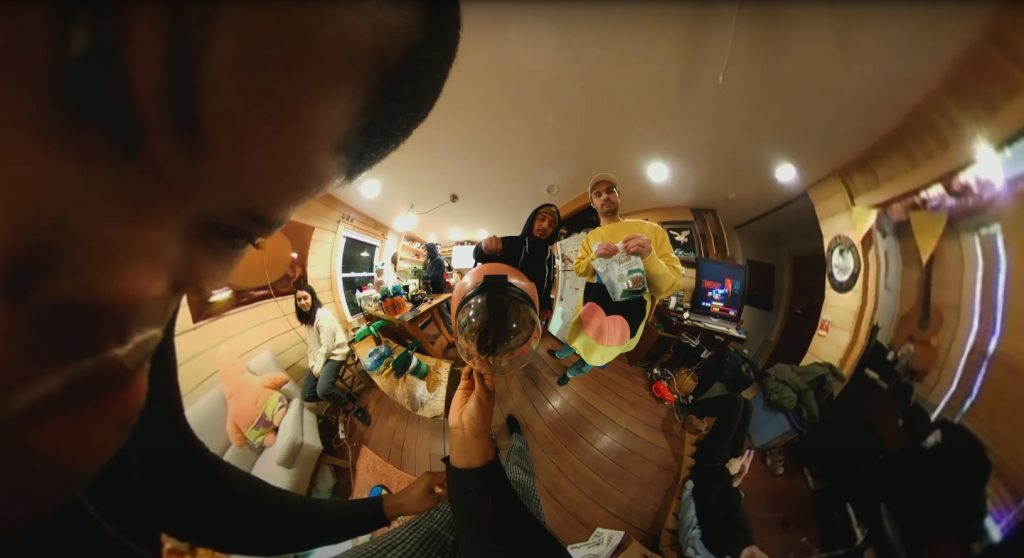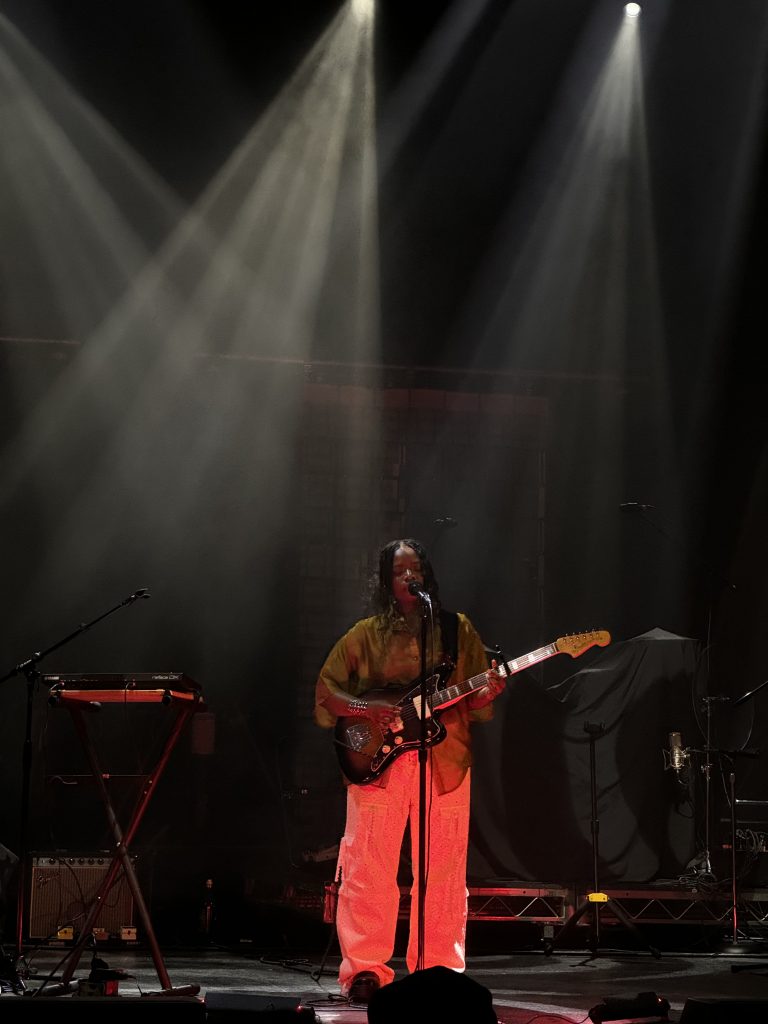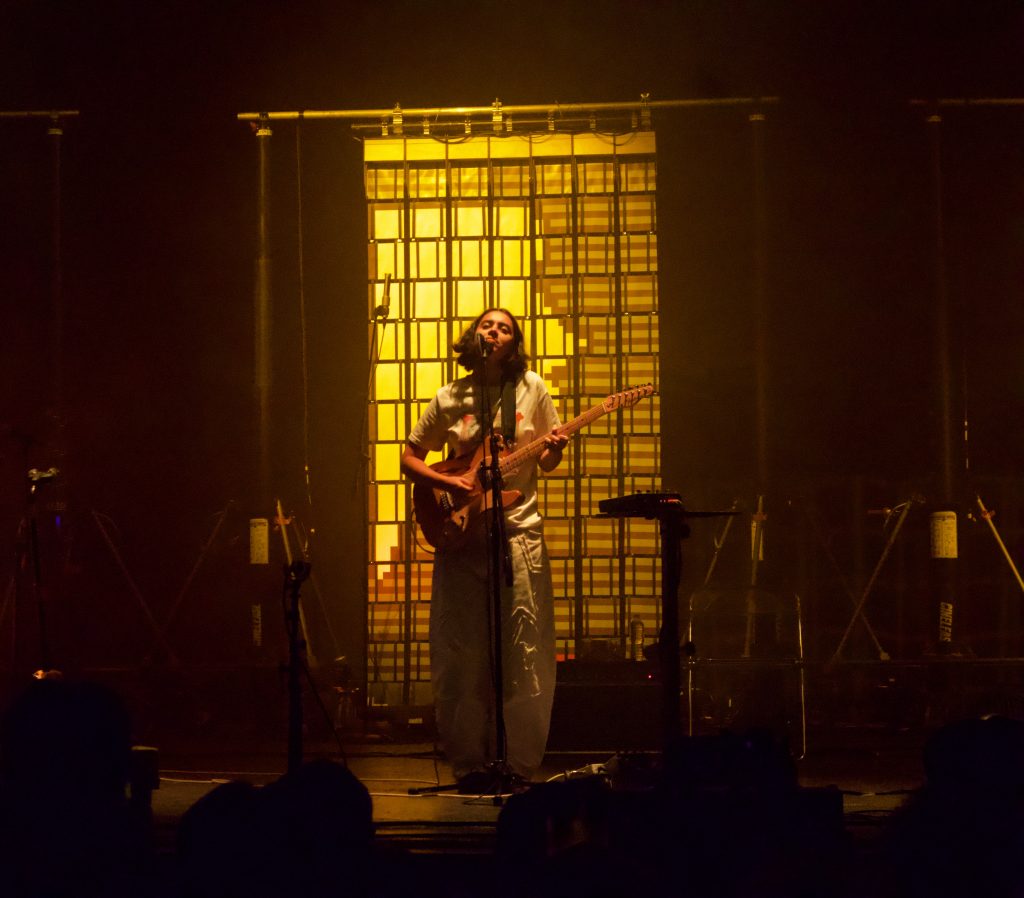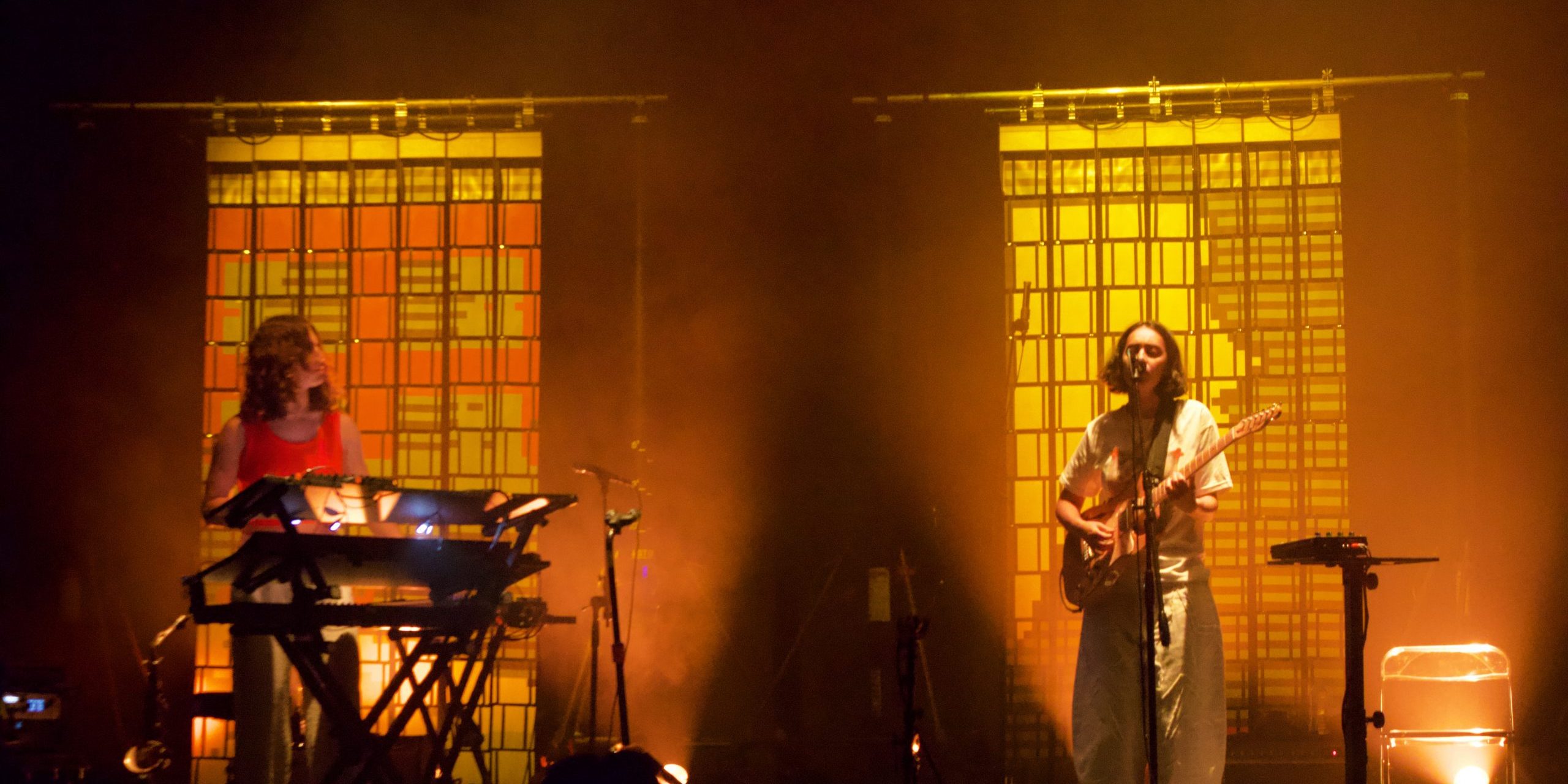Photography by Oli McCormack
While Oli and I waited for our ride at the crest of Gateway Plaza, a friend of his, Max, bumped into us. We told him that we were about to head to the Wiltern to see Crumb. “Have you ever heard of them?” Oli asked. Max’s eyes lit up and with a genuine smile he asked if we’d ever seen their music videos.
In the back seat of the car, the two of us stared nonplussed at “Locket,” which rolls out in a 360 degree camera angle that follows the consciousness of a sentient marble. Their mix of psychedelia and lounge jazz, which is far more approachable than the acid genres, is the perfect soundtrack to that mind-stretching five minutes of art bleeding at the edges. It makes for a great orientation for someone who’s eager to do mushrooms or LSD but is so far inexperienced. I was reminded of my days of watching the floor melt into the ceiling as Alice Coltrane oozes out of the speakers.

When we got out of the car and found ourselves under the Wiltern’s art deco gaze, Oli realized that he’d been to the venue before. It’s where he saw Belle and Sebastian. We made our way inside, got a drink, and walked around. After Oli got a sense of his placement as the photographer, we explored up and down the levels of the space. From the balcony we looked up at the decorative ceiling, with its gradient color scale and angular seven-pointed crown. “Yeah, I’ve definitely been here before. I can’t believe that I forgot,” Oli said. “But it looks like they’ve changed the ceiling.” I’d been to the Wiltern about a handful of times and felt like I’d never noticed the patterns above. So I absentmindedly agreed and said, “Yeah, seems like it.”

When Oli pulled out his phone and showed me the photo of the ceiling he remembered, a rotund Spanish Gothic masterwork with the red glow of a sleepless eye, I was puzzled. “This can’t be the place.” We investigated on his screen thanks to the geolocation function on the photos app and discovered that he had confused the Wiltern for the United at the Ace Hotel downtown. The two venues are structurally identical, with a slight difference in decór. It was a little bit of a mind-bending experience, not unlike an album by Crumb where portals between memories are unlocked by an ethereal sound.
Down on the floor, I watched Vagabon walk on stage with a quiet comfort. As if she were the only person in the entire building. Guitar in her grasp, accompanied with a drummer and a wildcard band member, who switched from bass to keyboards to saxophone with unobservable ease, she opened with her 2019 hit “Water Me Down.” Last year, Vagabon released Sorry I Haven’t Called, an album that makes sense and beauty out of vulnerable, sometimes ugly feelings. In songs like, “Can I Talk My Shit?” where she didn’t need her guitar, Vagabon sang with her hands in her pockets. She imbued a sense of calm generally reserved for cabarets. And despite electric moments like “Carpenter,” there was a feeling of melancholy that clouded her set. It all made sense when Vagabon told us that this was her last show in Los Angeles, before she moved back to New York City. The stoic resilience of her performance was empowering, because goodbyes are hard, but they’re made easy with the confidence that your next move is going to be the best one yet.

What’s made Crumb so special to me is that their blend of psychedelia and art rock should be a conflict. There are similar artists who have mixed these genres into a cohesive sound—like Poe, for instance. It’s just that with Crumb, the sounds are disparate—in a spectrum where Phish and Saint Etienne are the extremes. It’s a rare world where someone can appreciate both. Where a band can jam to the skies and collate unexpected samples and rhythms. Their newest album, Amama, is probably the furthest they’ve leaned into an art band. Frontwoman Lila Ramani brings her personal history into the mix with recordings of her grandmother singing in Malayalam. This feature opens the eponymous lead single to their latest, which also opens the show.
I was caught by surprise at their faithfulness and aptitude as a live act. In my head, I’d imagined them to be a lot more improvisational like so many psychedelic bands normally behave. With Crumb it’s the exact opposite, I don’t think I’ve heard a sound translated to its studio polish with such sharp accuracy before. It’s a special achievement, because the band is innovative and unconventional in the studio. So to have that come to life is a revelation.
It wouldn’t be Crumb without some interesting visuals. Of course the lights were superb. Ramani sometimes turned the white showlights on the crowd to communicate face to face with her audience. There were three curtains made up of plastic squares which switched between brut profiles and color blocks. Meanwhile Ramani’s banter was at a minimum. The band was locked in and they played for an astonishing hour and a half—nearly twenty songs. Whether it was “The Bug” or “Genie” or “XXX,” Crumb’s devotion to their art was impeccable. They enabled a night where unexpected doors were opened, maybe even to parallel universes—where so many of their songs fall.




